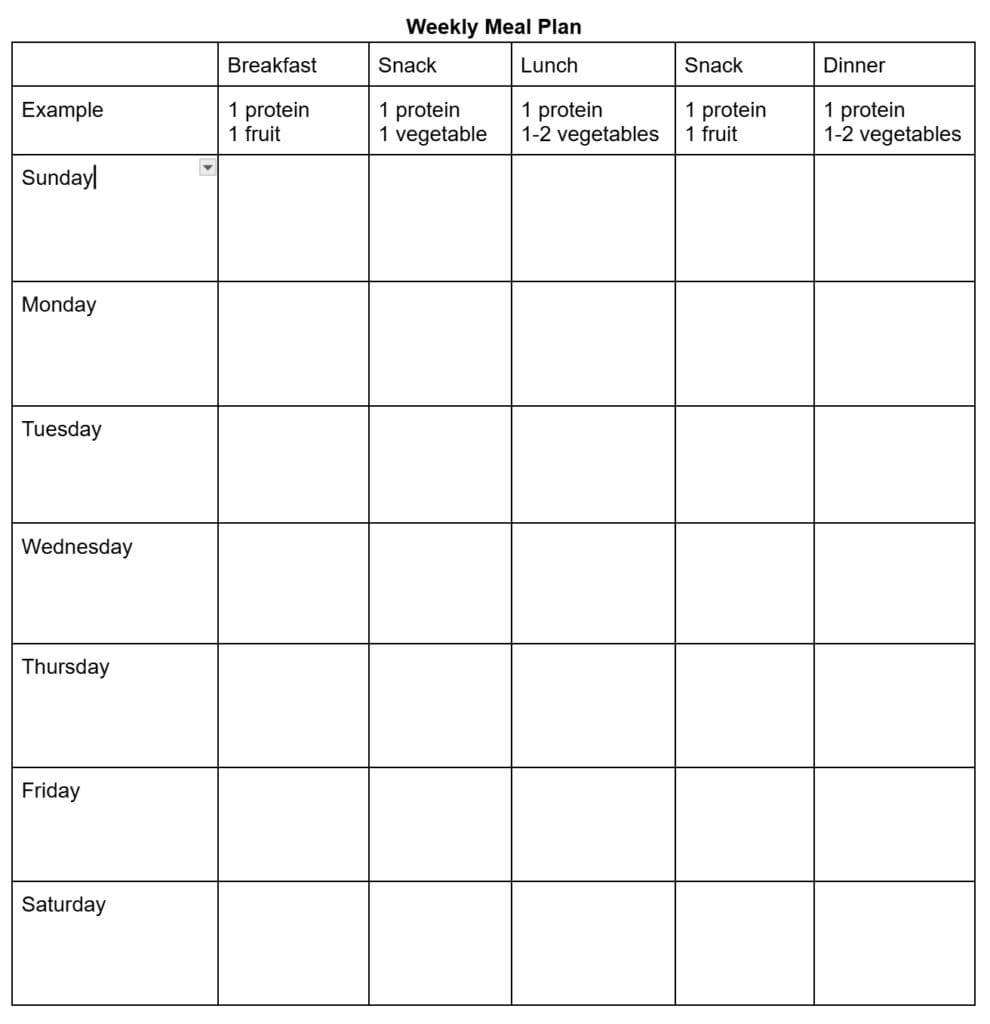Meal planning is critical for any successful weight loss program. Here are some tips from the expert dietary team at JourneyLite to help you along the way!
Step 1: Creating the Menu
- Check your calendar to see what events are going on for the week such as birthday parties, holidays, kids sporting events as these could affect your meal choices and how much time you have to cook or prepare a meal.
- Check what foods and beverages you have on hand in your refrigerator, pantry or cabinets
- Write down what food you will eat for each meal. Make a plan for 7 days or whatever time frame is the most manageable for you.
- Consider others in your household and what they may like or need when making your meal plan. Keep these people involved in the meal planning process.
Use the following steps as a guide for coming up with your meals and snacks:
- First, choose what protein options you would like to eat at all 3 meals.
- Protein options can include any of the following: Ground meats (85% or less fat), pork loin, lean lunch meat (turkey, low fat ham), chicken or turkey breast, crab, shrimp, white fish, tuna, salmon, natural peanut butter, nuts (almonds, pistachios, peanuts, walnuts), cottage cheese, low carb yogurts, eggs, egg whites, cheese (mozzarella, colby, provolone, swiss cheese, feta cheese, goat cheese), soy protein (tofu soft or firm)
- Second, choose what fruits and vegetables you would like to eat with your meals.
- Vegetable options can include any of the following: sour pickles, watercress, dill pickles, cucumber, mustard greens, radishes, celery, zucchini, summer squash, lettuce, tomato, sauerkraut, swiss chard, bell peppers, asparagus, mushrooms, spinach, eggplant, cauliflower, cabbage, arugula, green onion, jalapenos, collard greens, okra, spaghetti squash, green beans, turnip greens, broccoli, onions, carrots, snow peas (snap bean), brussel sprouts, kale, chinese cabbage, bean sprouts
- Fruit options can include any of the following: star fruit, cranberries, watermelon, strawberries, grapefruit, cantaloupe, papaya, peach, pear, plum, honeydew melon, blackberries, raspberries, apples, pineapple, oranges, blueberries
- Next, decide if you will need to include any snacks in between meals. Do you typically have 5 or more hours in between your main meals and need a snack to control your hunger?
- Healthy snack ideas include: Protein shakes, lean lunch meats, peanut butter and celery, apple and peanut butter, beef jerky, hard boiled eggs, raw veggies with laughing cow cheese, hummus with veggies, low carb yogurts, lettuce wrap with chicken or tuna salad, dill pickles with low fat cream cheese, salami roll ups, cottage cheese with tomato or blueberries
- Lastly, decide what beverages you need for the week.
- Healthy beverage options include: water, crystal light, propel fitness water, decaffeinated coffee or tea made with a sugar substitute, Powerade zero, sugar- free kool-Aid, or Mio flavoring
- Make a grocery list based off your meal plan
- Check the grocery ad for any food “deals” for the week
- Attach any physical coupons to your grocery list or clip them in the grocery app that you use
- Remember to make healthy food and beverage selections when making your meal plan for the week
Step 2: When You Grocery Shop
- Stick to your grocery list and buy store brand foods to save money. Bottom shelves usually have lower cost food items! Shop the perimeter of the store. If shopping in the grocery store is a temptation to buy foods off your list, then order groceries online for curb-side pickup or delivery
- Buy fresh produce when it is in season as it will taste the best during this time
- Limit prepared foods and frozen meals as they tend to be higher in fat, sugar, salt and empty calories
Step 3: Prepping Your Kitchen
- While unpacking your groceries, rinse any fresh produce, cut it up and place in containers (you are more likely to eat and not waste fresh produce if this step is done)
- Try cooking some items on your days off to save some time for the week (cut up vegetables, cook meat ahead of time)
- When cooking, consider doubling the recipe to freeze some for later. This will give you a quick meal on a future day if you do not have time to cook. Be sure to label and date the food prior to placing it in the freezer to store.
- Keep your meal plan on the fridge or in a visible location to remind you of what your plan is each day, especially if you need to pack lunch or thaw meat out for a future dish!

Download a PDF of this information and print it out if you like!


